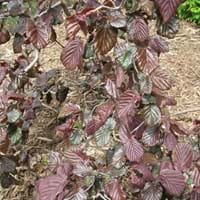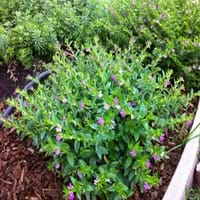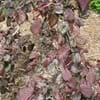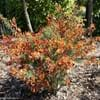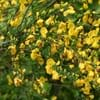Life Span
Annual
Perennial
Origin
Europe, Northern Africa, Western Asia
Mexico, Central America
Types
Shrub
Not Available
Habitat
Woods
Tropical areas
USDA Hardiness Zone
4-8
9-15
Sunset Zone
2a, 2b, 3a, 3b, 4, 5, 6, 7, 8, 9, 14, 15, 16, 17, 18, 19, 20
H1, H2, 16, 17, 18, 19, 20, 21, 22, 23, 24
Habit
Thicket/Colonizing
Cushion/Mound-forming
Flower Color
Yellow
White, Pink, Light Pink, Lavender, Violet
Flower Color Modifier
Not Available
Not Available
Fruit Color
Brown
Non Fruiting Plant
Leaf Color in Spring
Green
Light Green, Dark Green
Leaf Color in Summer
Green, Dark Green
Dark Green
Leaf Color in Fall
Yellow, Green
Dark Green
Leaf Color in Winter
Not Available
Dark Green
Leaf Shape
Lobed
Oblong to lance-shaped
Plant Season
Spring, Summer, Fall, Winter
Spring, Summer, Fall, Winter
Sunlight
Full Sun, Partial Sun, Partial shade
Full Sun, Partial Sun, Partial shade
Growth Rate
Medium
Medium
Type of Soil
Clay, Loam, Sand
Clay, Loam, Sand
The pH of Soil
Acidic, Neutral, Alkaline
Acidic, Neutral, Alkaline
Soil Drainage
Well drained
Well drained
Bloom Time
Early Spring, Spring, Late Winter
Indeterminate
Tolerances
Not Available
Drought
Where to Plant?
Ground, Pot
Ground, Pot
How to Plant?
Grafting
Cuttings, Divison, Layering, Seedlings
Plant Maintenance
Medium
Medium
Watering Requirements
Average Water Needs, Do Not over Water
Needs watering once a week, Requires more often in extreme heat
In Summer
Lots of watering
Lots of watering
In Spring
Moderate
Moderate
In Winter
Average Water
Average Water
Soil pH
Acidic, Neutral, Alkaline
Acidic, Neutral, Alkaline
Soil Type
Clay, Loam, Sand
Clay, Loam, Sand
Soil Drainage Capacity
Well drained
Well drained
Sun Exposure
Full Sun, Partial Sun, Partial shade
Full Sun, Partial Sun, Partial shade
Pruning
Remove damaged leaves, Remove dead branches, Remove dead leaves
Prune if you want to improve plant shape
Fertilizers
All-Purpose Liquid Fertilizer
14-14-14 Fertilizer
Pests and Diseases
Red blotch
Free of serious pests and diseases
Plant Tolerance
Drought
Drought
Flower Petal Number
Not Available
Single
Foliage Texture
Coarse
Medium
Foliage Sheen
Matte
Glossy
Attracts
Not Available
Butterflies
Allergy
Not Available
no allergic reactions
Aesthetic Uses
Showy Purposes
Borders, Ground Cover
Beauty Benefits
Not Available
Not Available
Environmental Uses
Air purification
Air purification
Medicinal Uses
Minerals, Rich in protein, tonic in pregnancy, Vitamin E
Dysentry, Eye Infection, Indigestion, Organ Stones
Part of Plant Used
Fruits, Leaves, Seeds, Wood
Flowering Tips, Flowers, Leaves, Shoots, Stem
Other Uses
Culinary use, Used for its medicinal properties
Showy Purposes
Used As Indoor Plant
No
Yes
Used As Outdoor Plant
Yes
Yes
Garden Design
Feature Plant, Foundation, Mixed Border, Topiary, Bonsai, Espalier
Bedding Plant, Container, Edging, Foundation, Groundcover, Hanging Basket, Mixed Border
Botanical Name
CORYLUS avellana 'Contorta'
CUPHEA hyssopifolia
Common Name
common hazel
False Heather, Mexican Heather, Hawaiian Heather
In Hindi
contorted filbert
Mexican Heather
In German
contorted filbert
Mexican Heather
In French
noisetier contorsionné
Mexicaine Heather
In Spanish
avellana contorsionada
Heather mexicana
In Greek
παραμορφωμένες φουντουκιού
Μεξικού Heather
In Portuguese
filbert contorcido
Mexican Heather
In Polish
wykrzywioną leszczyna
Mexican Heather
In Latin
contortis Avellanam
Mexicanus Heather
Phylum
Magnoliophyta
Magnoliophyta
Class
Magnoliopsida
Magnoliopsida
Family
Betulaceae
Lythraceae
Clade
Angiosperms, Eudicots, Rosids
Angiosperms, Eudicots, Rosids
Tribe
Not Available
Not Available
Subfamily
Not Available
Lythroideae
Number of Species
Not Available
Not Available
Season and Care of Contorted Filbert and Mexican Heather
Season and care of Contorted Filbert and Mexican Heather is important to know. While considering everything about Contorted Filbert and Mexican Heather Care, growing season is an essential factor. Contorted Filbert season is Spring, Summer, Fall and Winter and Mexican Heather season is Spring, Summer, Fall and Winter. The type of soil for Contorted Filbert is Clay, Loam, Sand and for Mexican Heather is Clay, Loam, Sand while the PH of soil for Contorted Filbert is Acidic, Neutral, Alkaline and for Mexican Heather is Acidic, Neutral, Alkaline.
Contorted Filbert and Mexican Heather Physical Information
Contorted Filbert and Mexican Heather physical information is very important for comparison. Contorted Filbert height is 180.00 cm and width 180.00 cm whereas Mexican Heather height is 20.30 cm and width 30.40 cm. The color specification of Contorted Filbert and Mexican Heather are as follows:
Contorted Filbert flower color: Yellow
Contorted Filbert leaf color: Green
Mexican Heather flower color: White, Pink, Light Pink, Lavender and Violet
- Mexican Heather leaf color: Light Green and Dark Green
Care of Contorted Filbert and Mexican Heather
Care of Contorted Filbert and Mexican Heather include pruning, fertilizers, watering etc. Contorted Filbert pruning is done Remove damaged leaves, Remove dead branches and Remove dead leaves and Mexican Heather pruning is done Prune if you want to improve plant shape. In summer Contorted Filbert needs Lots of watering and in winter, it needs Average Water. Whereas, in summer Mexican Heather needs Lots of watering and in winter, it needs Average Water.
